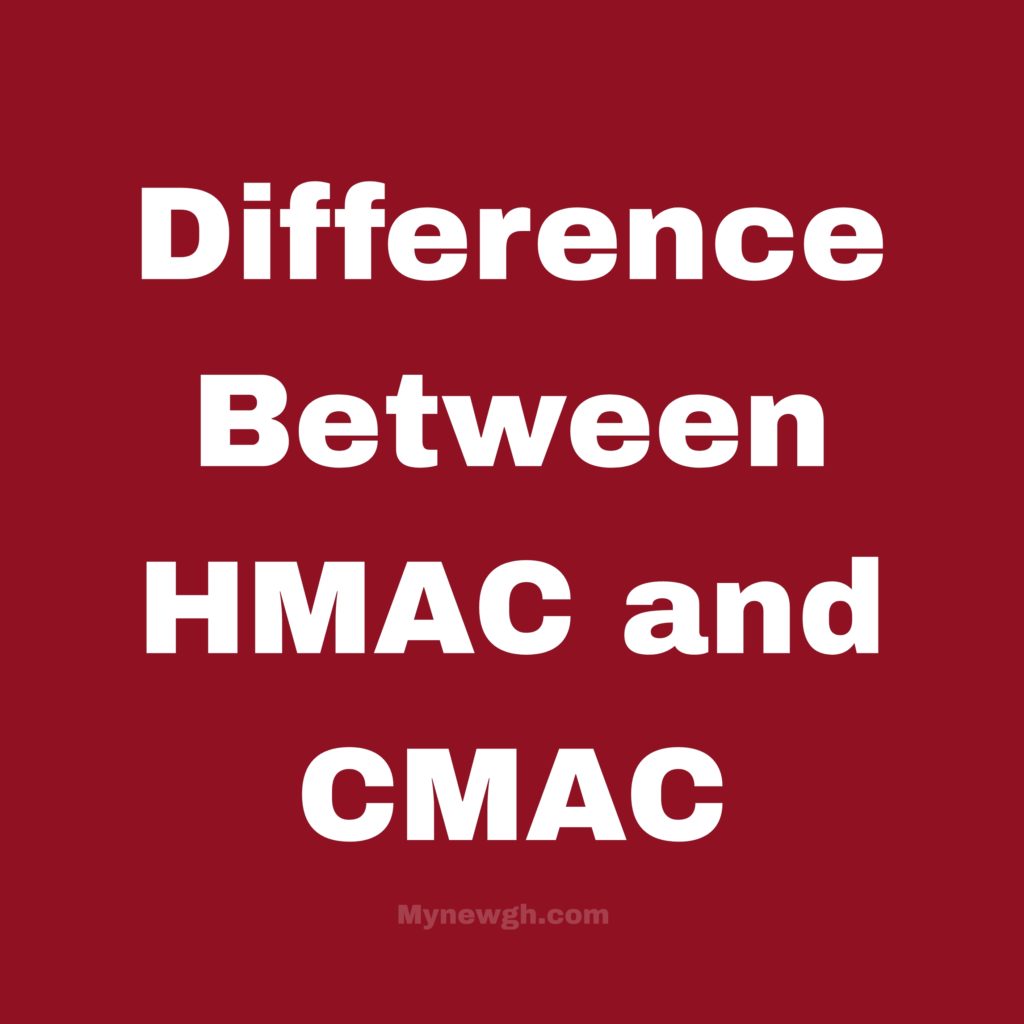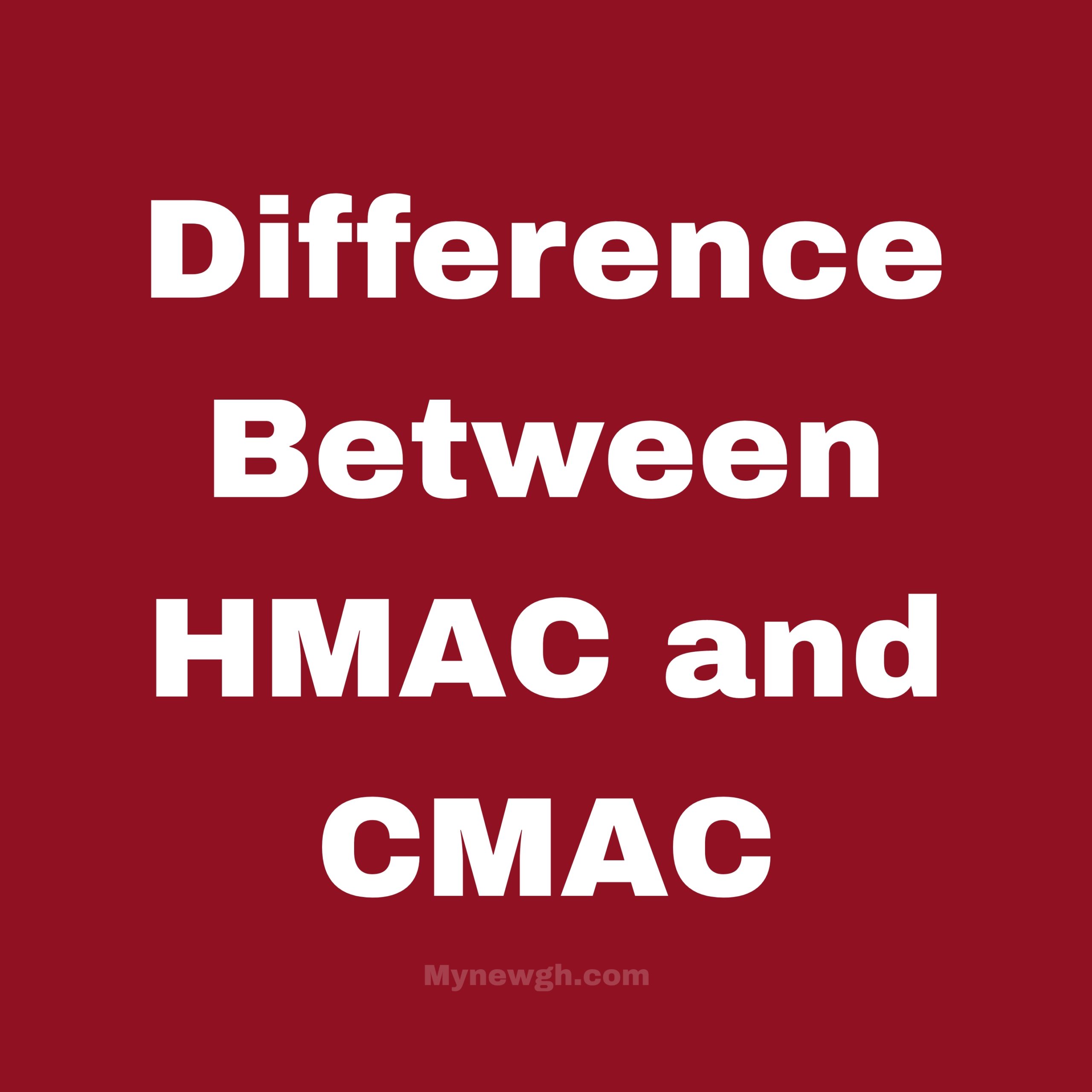HMAC is a special type of MAC that uses both a hash function and a secret key to verify both the integrity and authenticity of a message. It is one of the approved general-purpose MAC algorithms, along with KECCAK and CMAC.
MACs enforce integrity and authentication in secure file transfer protocols such as SFTP, FTPS, and HTTPS. They are also used in digital signatures.

HMAC is a cryptographic hash function
HMAC (short for Keyed-Hash Message Authentication Code) is a cryptographic hash function that uses a secret key as input along with the message to create a unique output. This helps ensure the integrity and authenticity of a message and is a good way to prevent man-in-the-middle attacks. Using HMAC can also help prevent tampering of HTTP requests.
To use HMAC, the sender and recipient must both have a secret key that is known only to them. The secret key is then used to compute a MAC for the message, and the resulting hash value is then verified by the recipient. This verification process is considered secure because it can withstand attacks such as dictionary attacks, which are often used to break passwords.
The MAC is a combination of a hashing algorithm, a secret key, and a fixed amount of additional information. The secret key must be long enough to avoid being broken by a brute force attack, and it must be generated randomly. For example, if the hashing function is SHA-1, the key must be at least 16 bytes long.
Whether you are a managed service provider or a software developer, it is important to use HMAC to protect the integrity of your data. It’s also a good idea to use other security measures, such as side-channel attacks, to avoid tampering.
HMAC is a cryptographic message authentication code
HMAC is a cryptographic message authentication code that is used for enforcing integrity and authentication in data transfers. It works by running a cryptographic hash function like MD5, SHA-1, or SHA-256 over the data to be authenticated and a secret shared key. It is similar to digital signatures, which also enforce integrity and authenticity, but differ in that signatures use asymmetric keys while HMAC uses symmetric keys.
The key used for this process is generated during a pre-process called key exchange, where the parties involved share a secret. Only those parties who participate in the key exchange know what this secret is. Once the key is established, the client and server each make their own HMAC on the incoming data, which are then sent to each other. If the two HMACs match, it means that the incoming data has not been altered during transmission, and the message can be trusted.
HMAC is easy to implement for small businesses, and it can be an effective way to prevent hackers from stealing sensitive information. However, it is important to remember that the HMAC algorithm requires a secret key, which should be stored securely. The risk of unauthorized access to the secret key is a serious threat, so it’s vital that businesses have processes in place to protect this sensitive data.
HMAC is a cryptographic message integrity check
The HMAC message integrity check can be used to verify the integrity of a message transmitted over a network. This is done by using a secret key in combination with the data to generate an initial hash value that can be verified by the receiver. This ensures that the message has not been tampered with during transmission. This is useful for preventing man-in-the-middle attacks and other forms of tampering.
This symmetric key algorithm can be applied to messages of any length, and is often combined with other cryptographic protocols to provide a complete security solution. For example, SSL/TLS and SSH use it to authenticate data transmissions. In addition, it can be used to create secure tokens for session management and to store password hashes in databases.
A MAC works by hashing the message and the secret key to produce a unique, fixed-length code. This code can be verified by the receiver with the same secret key to determine whether or not the message has been tampered with during transmission. If the MAC matches, it is likely that the original message was sent by the expected sender and that it has not been modified in any way.
This type of verification is particularly important for secure messaging, since it can prevent attackers from spoofing messages or injecting malicious code. It also helps to avoid data loss, which can be caused by untrustworthy third parties.
HMAC is a cryptographic message encryption
HMAC is a cryptographic message authentication code that protects data from attacks. It uses a secret key to calculate and verify messages. This allows senders and recipients to check whether their messages have been tampered with by hackers. It also ensures the integrity of information that is transmitted online. In addition, HMACs can be used to verify e-mail addresses during the registration process.
To create an HMAC, you need to have a cryptographic hash function and a secret key. The secret key should be kept private and only known by the parties involved in the transaction. Once you have these items, you can use the hash function to create a hash value for the message. The hash will then be transmitted along with the message. The receiver can then verify the hash using the secret key and see if the values match.
If the hash matches the transmitted hash, it is safe to assume that nothing has been tampered with during transmission. This can significantly lower the chance of hackers gaining access to secure systems. It can even help prevent them from obtaining personal information such as credit card numbers and Social Security numbers. This layer of security is particularly important for businesses that handle sensitive information. Using HMAC can also help companies reduce their risks by giving them the ability to detect hacking attempts before they occur.
What Is Cipher-Based Message Authentication Code (CMAC)?
Cipher-based Message Authentication Code (CMAC) is an authentication algorithm that uses a block cipher to provide assurance of the authenticity and, thus, integrity of binary data. It is a variant of the CBC mode of operation used in MAC-based encryption, but differs from it in that CMAC allows messages to have any length and in that it does not require padding or a complete block of cipher bits at the end of the message.
The CMAC algorithm became a NIST recommendation in May 2005 and is free for all use. It is a modification of the three-key CBC-MAC construction that Black and Rogaway proposed in 2000, which they named XCBC. XCBC has provable security, but it requires three keys. One year later, Iwata and Kurosawa reduced the number of keys to two in their TMAC construction, and in 2002 they refined their work and submitted it to NIST as OMAC1. NIST standardized this algorithm in May 2005 as CMAC.
An instance of a cmac object can be created from the factory function cmac(). Its internal state can then be manipulated using the methods Update, Final and Verify from the HashTransformation base class. The MAC tag computed over the data processed so far is returned as the output.
This API is based on the NIST SP 800-38B specification. A 128 bit cipher block size is assumed for the most efficiency. However, it is possible to also support a 64 bit cipher block size for legacy purposes if desired. This is done by specifying the option -CMAC_BLOCK_SIZE.
A cmac object can be used with a filter to verify a received MAC. This can be accomplished by using a HashVerificationFilter. The filter will call Update, Final and Verify with the cmac object in its pipeline.
Applications to take the CMAC exam are processed quarterly. Once approved, applicants will be able to schedule their exam at a testing center in their area.
The certification exams are administered by the American Case Management Association (ACMA). ACMA’s Certified Case Manager credentialing program is a national certification for the practice of case management. Applicants must meet minimum requirements to be credentialed. The minimum experience requirement is a bachelor’s degree in a relevant field and two years of professional experience as a case manager or case management administrator/leader.







![Key Difference Between Twitter And Threads [Threads Vs Twitter] Key Difference Between Twitter And Threads [Threads Vs Twitter]](https://www.mynewgh.com/wp-content/uploads/2023/07/Screenshot_20230722-155526_Google.jpg)
![Waptrick: How To Download Free Mp3 Music, videos, Games [Step-By-Step Guide] Waptrick: How To Download Free Mp3 Music, videos, Games [Step-By-Step Guide]](https://www.mynewgh.com/wp-content/uploads/2023/07/Download-Waptrick-Mod-Apk-Premium-No-Sensor-Tanpa-VPN.jpg)
